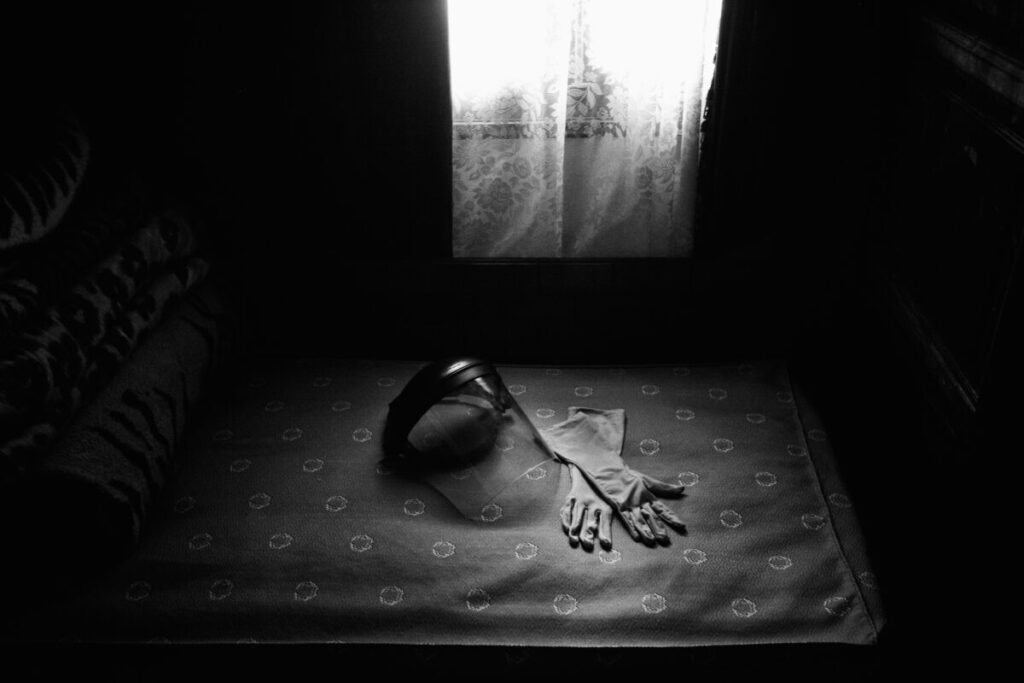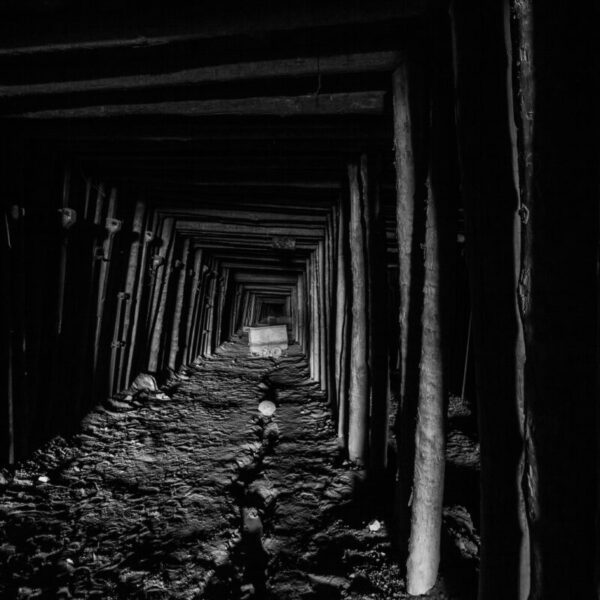One must learn to look. Not just see. To look is to take the time, to expose oneself to the tremor of images, to welcome what they do not show at first glance, what surfaces, what resists, what screams in silence. In the photographs of Zied Ben Romdhane, something plays out in this order: a struggle to make visible what official history represses, an attempt to tear figures from their assignment to silence.
When he photographs in Tunisia the miners of Redeyef, for example, it is not merely documentation. It is a revelation. The faces are covered in black dust, the bodies inscribed in a fractured geography, damaged by extraction and forgetting policies.
Of dignity in the face of erasure
But what matters here is not so much the mine as the memory. One must, to paraphrase Didi-Huberman, "open one's eyes to the ruins," to bring forth dignity where one expected erasure. Ben Romdhane does not photograph subjects: he encounters presences, almost spectral apparitions, emerging from a brutal reality. He does not seek to sublime misery; he captures its layers, the successive social, historical, emotional strata. The image then becomes a place of survival: it carries within it the trace of a still burning past, it pulses with the fire of struggles, betrayed hopes, and intact anger.
There is, in Ben Romdhane, an aesthetics of the interval: between visibility and invisibility, between what is shown and what is silenced. The image is less there to "explain" than to shake knowledge, to create interstices where the viewer can experience the world differently. The Tunisian landscapes he captures; deserts, industrial ruins, arid faces, are traversed by lines of flight, open wounds. They are both documents and symptoms, sensitive surfaces to be read like one would read a palimpsest.
Glimmers of the visible
This aesthetics of survival finds a particularly poignant resonance in The Children of the Moon, a project that Ben Romdhane dedicates to children affected by xeroderma pigmentosum, a rare genetic disease that condemns them to flee from sunlight, under threat of irreversible lesions. Here again, it is not about producing a spectacular image of suffering, but about getting as close as possible to what, in human experience, remains invisible, even unspeakable. What Ben Romdhane shows is less the disease than the condition of exile that it imposes: an internal, luminous, and cruel exile, a life lived in shadow, literally.
Through this series, he explores the glimmer of the visible, that fragile zone between shadow and light where the image becomes a form of address, a silent call. The portraits of these children, often veiled, protected, but looking directly at the camera, shift our gaze: they look at us as much as we look at them. The camera then becomes a medium of exchange, almost a chamber of echoes, where the faces become signs, surfaces of inscription for a voice long stifled. There is a strong tension here between the vulnerability of the subject and the power of the gaze.
The children of the moon are not simply shown as victims of a biological fate, but as bearers of strength, a challenge to the norm, a mute and proud beauty. Like survivors, they inhabit the image as one inhabits a breach in time: with an intensity that escapes the usual categories of pathos or compassion.
These images serve as acts of memory, but also of repair. They reintegrate into the field of the visible bodies that society, and often photography itself, relegates to the invisible. They remind us that to see is also to recognize, and that to recognize is to do justice. The Children of the Moon is both a political and poetic gesture, an act of resistance that takes the form of an illuminated silence. A silence that Ben Romdhane invites us to hear.
Zied Ben Romdhane, in this sense, is a visual historian of silences; his work is a living imprint of a punctured, painful, resistant memory. But it is not a desperate work. There is in these images a light, an insistence, a will to stand tall, despite everything.
His photographer's gaze invites us to make the images speak, not as one tells a linear story, but as one invokes a punctured, painful, resistant memory.

Sana Tamzini, artist and exhibition curator. She directed the National Center for Living Art in Tunis from 2011 to 2013. She is also the president of the Fanak Fund for the mobility of artists and cultural operators.
Cover photo: Tunisia. Gafsa. Redeyef. Former underground mine © Zied Ben Romdhane
